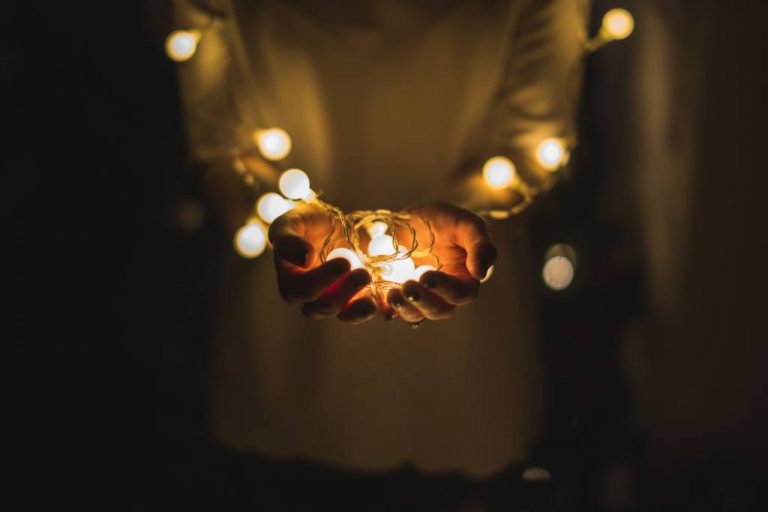
Changes in season can be really hard, particularly following many (too many) months of a global pandemic. For some, transitioning into winter can bring happy and enjoyable feelings. However, for others, this transition can also prompt feelings of overwhelm or dread, as we move towards colder weather, holiday planning, and staying inside more.
Every year, the change of seasons seems to necessitate a change in our self-care plans. Given what we as individuals, communities, and world citizens have endured these last few years, self-care is more important than ever. Reminding ourselves about some of these options can help us better cope if some tough feelings do surface.
Despite all of the current or future challenges we also need to find a way to care for ourselves. When we care for ourselves, we are also helping others.
Here are some possible self-care plan suggestions for social distancing during colder months.
Find ways to make indoors cozy.
When seasons change, and we are spending more time indoors, it is often helpful to spruce things up around you. Maybe consider some comfortable blankets near the couch. Or find a new comforter on your bed. Find some safe battery-powered candles that add a nice glow to your room. You may consider some fancy bath supplies next to the tub. Try to discover things that make it a luxury to be stuck indoors.
Create a good book list for yourself.
Reading is a nice way to enjoy some escapism and imagine things differently. There are so many talented authors and types of books, that even people who don’t read regularly are likely to find something. It is always ok to call your public library and ask for suggestions based upon other things that you have enjoyed reading. Most libraries keep popular book lists as well. Used book stores are even a great way to buy a few fantastic books in advance so you are more tempted to read them (and pass them on to others later).
Consider using a habit-tracking device or app.
If you are like many people, it can be hard to have the motivation to drink water, exercise, or eat in healthy ways. Sometimes, habit-trackers can help you stay motivated and reminded to try. Generally, it is most helpful to try one habit at a time until things gradually improve. The goal is not perfection, just increased attention to the things that keep us healthier. Here is a list of some habit tracking apps.
Find some inside exercise equipment and get started.
If you have exercise equipment in your basement or garage, dust it off and get started. Put it close to where you spend time, like in your home office or bedroom so that you are prompted to use it more. Some people have converted their garages into exercise studios during this period of social distancing. Wherever it fits in your home, make it somewhere that you see and will enjoy using.
There are several apps that help with overall fitness (like running, cycling, or HIIT). Some have a monthly membership, but it may be safer and more cost-effective than a gym membership right now. For example, Cardiocast, Couch to 5K, Sworkit, have many options of teacher-led classes that you can listen to and track. Here is a list of other potential apps as well.
“When endorphin levels go up, it can counteract the stress response that is so damaging to the immune system,” he says. “Exercise also improves mental health. When you’re feeling down or stressed, exercise can put a smile on your face.”
Tony Maloney, National Institute for Fitness and Sport in Indianapolis
Monitor for Seasonal Affective Disorder Symptoms
Many people experience symptoms of decreased mood, decreased energy, and appetite changes when the seasons shift. This can be a normal part of how the human body adjusts to winter. For some people, however, these symptoms are more intense and/or increase symptoms of depression significantly. This is called Season Affective Disorder, or SAD. Symptoms can range from mild to severe. Other common symptoms of SAD include fatigue, increased cravings for starches and sweets, weight gain, concentration concerns, feelings of hopelessness and thoughts of suicide.
Many more people experience SOME, but not ALL of the symptoms of SAD. Even a few of the symptoms are enough to make life quite difficult. This article, by the National Institute of Mental Health, also discusses Seasonal Affective Disorder. Hope Springs’ Dr. Mollie Burke, has also written a helpful article on surviving winter.
Notice your emotions, label them, and lean into them.
It can be very helpful to notice your emotions, where you feel them in your body, and behaviors that you do when you feel this way. For example, if you are feeling more tired and grumpy, you may notice heaviness in your chest and limbs. You may notice that you try to perk yourself up with more sugar or caffeine at these times, which is marginally effective.
When you lean into your feelings, you allow yourself to feel them. So instead of trying to get rid of the grumpiness or fatigue, you simply notice your feelings and make the choice to accept them. You may tell yourself like, “It’s ok, lots of people feel grumpy and tired, knowing that winter is coming. It’s ok to feel what I feel about it.”
ALWAYS take thoughts of suicide seriously.
If you or someone you love has thoughts of self-harm, it is always time to get help. Don’t wait for things to “get better,” or “go away.” Talk to your doctor, your therapist, or someone you trust. Seek out psychotherapy and learn skills to understand and manage your symptoms.
Follow through on what’s important to you, despite the season.
Consider what is most important to you. Is is family, staying healthy, or your work, for example? If so, continue to take the time to put your energy and commitment into these activities, even if you are fatigued and grumpy. If you make the choice to follow your values, you will likely do better in the long-run.
For example, If you value health, you will likely want to continue with some winter-friendly exercise. Maybe you run or walk outside, but you make sure you have warm and sturdy outerwear. Or if your gym is closed due to COVID, consider some of the exercise suggestions above.
If you value family, you may want to make sure that you continue to connect and participate in family activities. This year, you may more frequent consider FaceTime, letters, or phone calls. You may have shorter, well-ventilated, socially distanced get-togethers in a screen porch or garage with heaters. Above all else, don’t drop things that are important to you because of COVID, weather, or social distancing.
Don’t Forget the Light Box.
Light boxes have been proven in research to help with SAD. Light therapy may also be more effective when it’s combined with other treatments, such as antidepressant medication or psychotherapy. A light box mimics outdoor light. Researchers believe this type of light causes a chemical change in the brain that lifts your mood. Most people use light boxes for a minimum of 30 minutes each morning.

You can buy a light box yourself, or your doctor may recommend a specific light box. When looking for a light box, you want to make sure it is made specifically to treat mood, and that it emits as little UV light as possible. Talk to your health care professional about light box options, particularly if you struggle with Bipolar Symptoms or symptoms of Mania.
Unlike medications, the light box helps people feel better within 1-2 weeks. Although most lightboxes will need to be within 2 feet of you, you should treat the light box like the sun. Put it on a table while eating or reading, receiving the light indirectly. Looking directly into a light box can be harmful to your eyes.
Increasing your natural exposure to light will also help.
The light that is most needed is the light that causes awakening in the morning. One of the best ways to get light is to lift the bedroom shades so you get as much of the early morning light as possible. (This of course means that it has to be light in the morning when you get ready, which for many people in Northern latitudes, it is not). It is often helpful to take a walk at this time on sunny days. Even as much of 20 minutes of sunlight daily is been proven to help some people. Sit by a window when possible. Increase the light, particularly in the morning hours.
Eat for health
Make sure you are eating fruits and vegetables in order to get the nutrients that you need. This is particularly important with the health risks of COVID. Oftentimes, people crave starchy carbohydrates in colder months, which are less healthy. If any of your nutrient levels are low, such as Vitamins C, B, or D, mood changes will worsen. Make a point to have regular, balanced meals which include fruits and vegetables. Take it easy on the junk food and fast food. Remember that you are feeding your brain as well as your body. Many doctors recommend Vitamin supplements for patients, particularly Vitamin D. Do not hesitate to talk to your doctor if you feel that it is helpful.
Reduce drugs or alcohol when possible.
If you are feeling low due to the seasonal shift, COVID, or social distancing, try not to self-medicate with drugs or alcohol. Many times, these substances can sabotage the emotional benefits of your other efforts for self-care. Most of the times, chemicals that are not prescribed may further impair your body’s chemistry, and may often make your symptoms worse.
Stay consistent with your efforts.
In order to for skills, exercise, and light therapy to be successful, it will be important to use them daily. Some people find it helpful to make light therapy a part of their morning routine, either at breakfast, or first thing at work. Similarly, people who are most effective at exercise and healthy diet make them a part of their everyday life.
Don’t be afraid to seek professional help.
You may want to seek help from a psychologist. They are there to help, regardless of the season. A psychologist can provide you support and skills to feel better. Research shows that psychotherapy, is an effective treatment for low mood, stress, and anxiety. It is also okay to talk to your physician, and ask for a referral for a qualified psychologist. It is often helpful to let your Primary Care Physician also know that you are struggling with seasonal shifts, stress, sadness, or symptoms of Seasonal Affective Disorder. Many times, they will also have recommendations that can be very useful.
![]()
